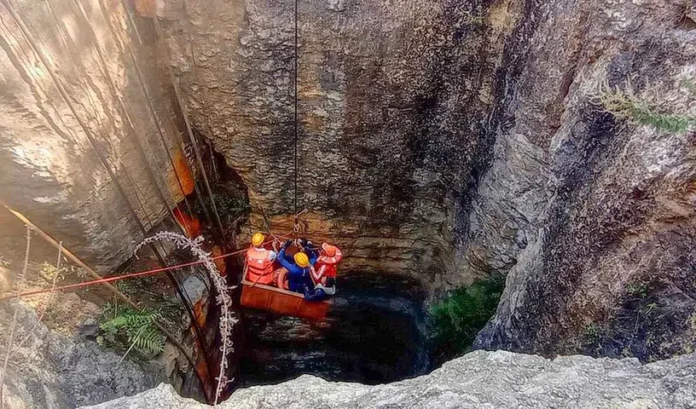The relentless rescue operation at an illegal coal mine in Assam’s Tinsukia district came to a tragic end with the recovery of all the bodies of the trapped miners. The incident, which occurred in the Ledo-Margherita area, claimed the lives of six miners, shedding light once again on the perils of illegal mining in the region.
The harrowing accident took place on the night of February 16, when the miners became trapped after the mine they were working in caved in. Despite the challenging terrain and adverse conditions, rescue teams worked tirelessly for four days to retrieve the bodies. Their efforts culminated in the recovery of the final body on February 20, marking a grim end to the mission.
A Dangerous Undertaking
The miners had reportedly entered the abandoned rat-hole mine in search of coal when a section of the mine collapsed, burying them under tons of debris. Rat-hole mining, a dangerous and illegal method involving narrow tunnels, is common in Assam and neighboring Meghalaya, despite being banned due to its hazardous nature and environmental impact.
Local authorities confirmed that the miners were working without proper safety measures. The families of the victims expressed grief and frustration, accusing mine operators of negligence and exploitation. Many residents in the region, driven by poverty and lack of employment opportunities, often resort to such illegal mining activities to sustain their livelihoods.
Rescue Operation and Challenges
Rescue teams comprising personnel from the State Disaster Response Force (SDRF), National Disaster Response Force (NDRF), and local administration faced significant challenges. The narrow mine shafts, unstable ground, and the risk of further cave-ins hindered their progress. Heavy rains also complicated the operation, reducing visibility and increasing the risk of landslides.
Nevertheless, the rescuers persisted, employing heavy machinery and manual digging techniques to navigate through the debris. Oxygen levels inside the mine were critically low, further diminishing the chances of finding any survivors. As days passed, hope for a miraculous rescue faded, and the focus shifted to recovering the bodies.
Identifying the Victims
The deceased miners were identified as locals and migrant laborers from nearby states. Their families were inconsolable as authorities handed over the bodies after post-mortem examinations. The tragedy has left the small mining community in shock, with many questioning the lack of oversight and enforcement of mining regulations.
Legal Action and Government Response
Following the incident, the Assam government launched an investigation into the illegal mining operations in the region. Several individuals, including the mine’s alleged operators, were detained for questioning. Authorities assured strict action against those responsible and promised to crack down on illegal mining activities.
Chief Minister Himanta Biswa Sarma expressed his condolences to the families of the victims and vowed to implement stricter regulations to prevent similar incidents in the future. He emphasized the need for alternative livelihood programs to reduce dependence on illegal mining.
The Human Cost of Illegal Mining
The tragedy in Tinsukia is not an isolated incident. Across India, illegal mining continues to claim lives, often involving marginalized communities desperate for work. These miners operate under life-threatening conditions, with little regard for safety protocols.
Environmental activists have long criticized the authorities for turning a blind eye to such activities. They argue that the nexus between illegal miners and local officials enables these dangerous operations to thrive. The Tinsukia disaster serves as a stark reminder of the human cost of unregulated mining and the urgent need for reform.
A Call for Change
As Assam mourns the loss of six lives, the tragedy underscores the necessity for systemic change. Stricter enforcement of mining regulations, improved working conditions, and alternative employment opportunities are crucial to safeguarding the lives of vulnerable workers.
The silent grave in the depths of the Tinsukia coal mine will forever remind the community of the price paid for coal extracted through perilous means. The question remains: will this disaster prompt real change, or will the cries of the lost miners fade into the echoes of the past? Only time will tell.



